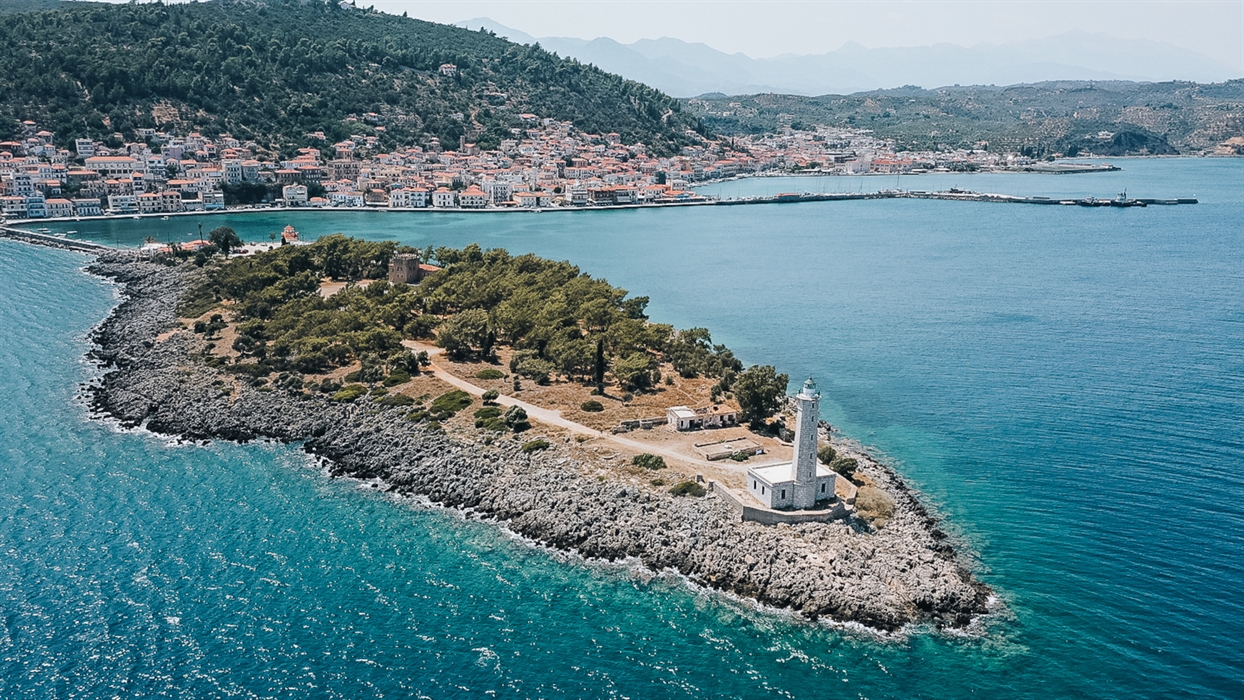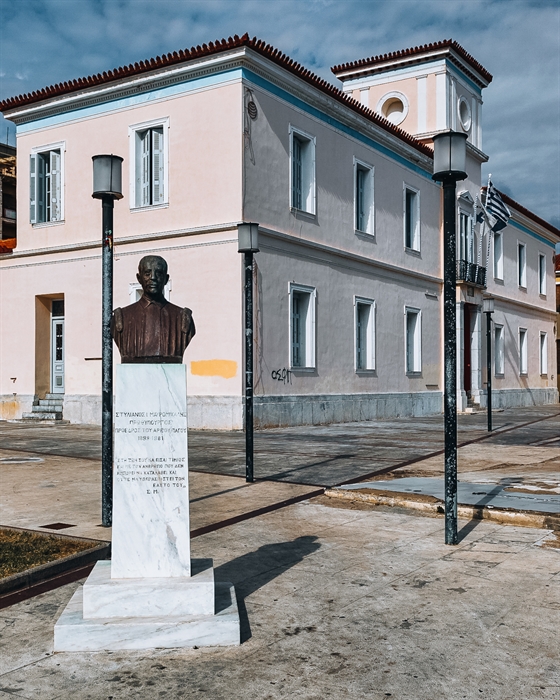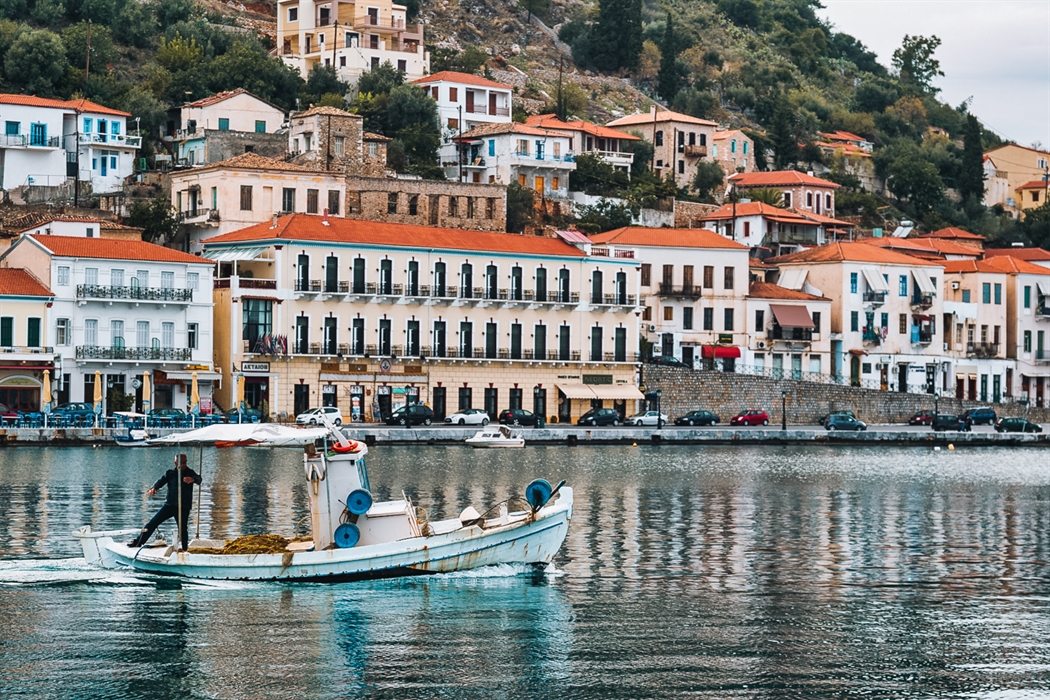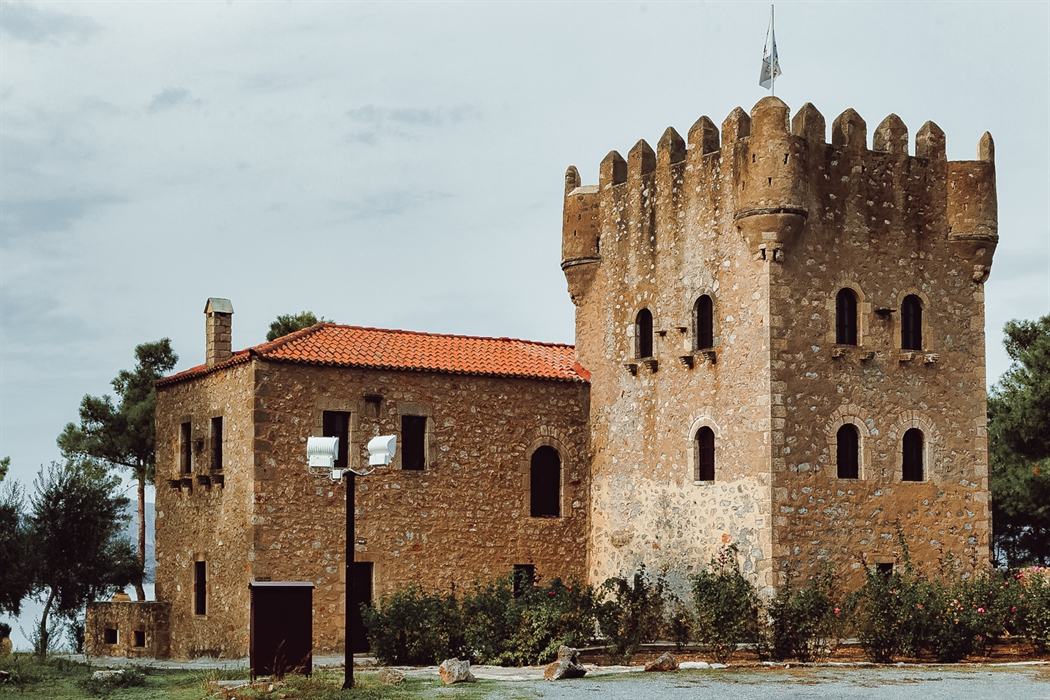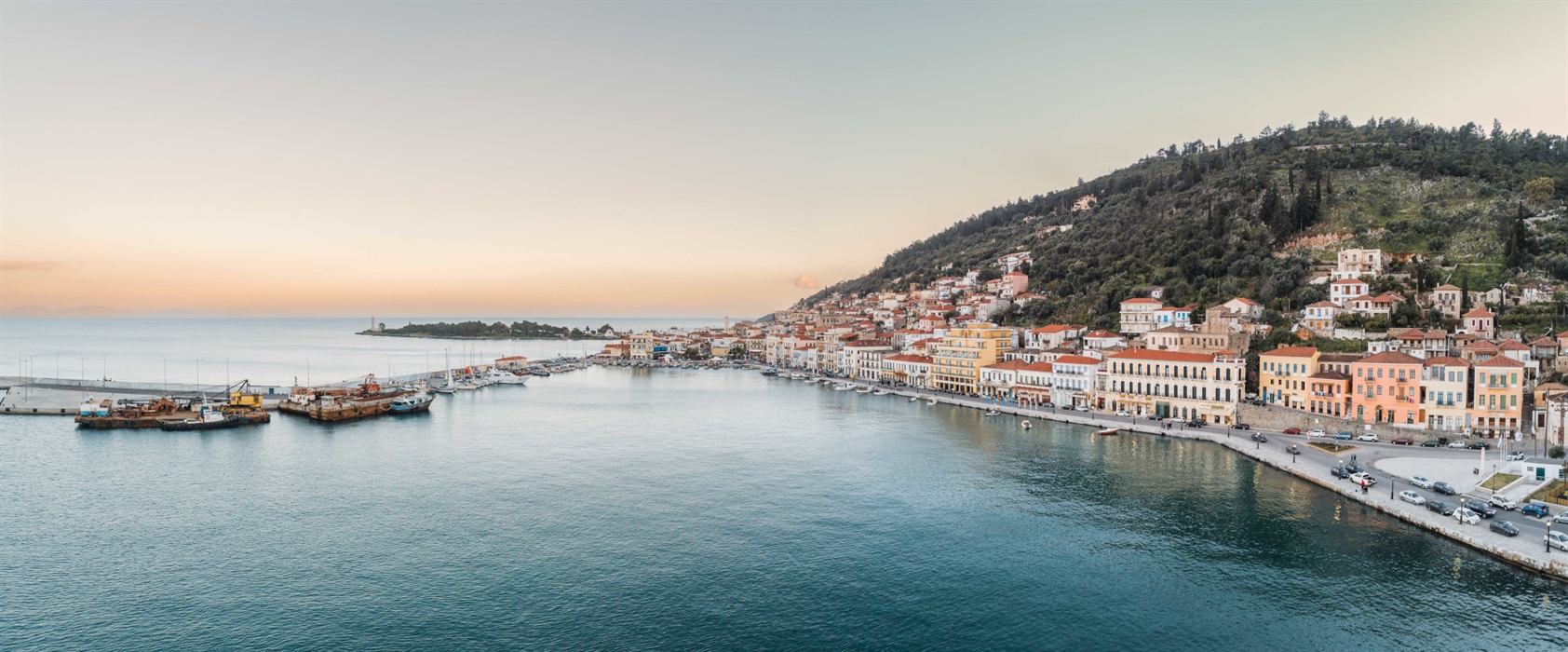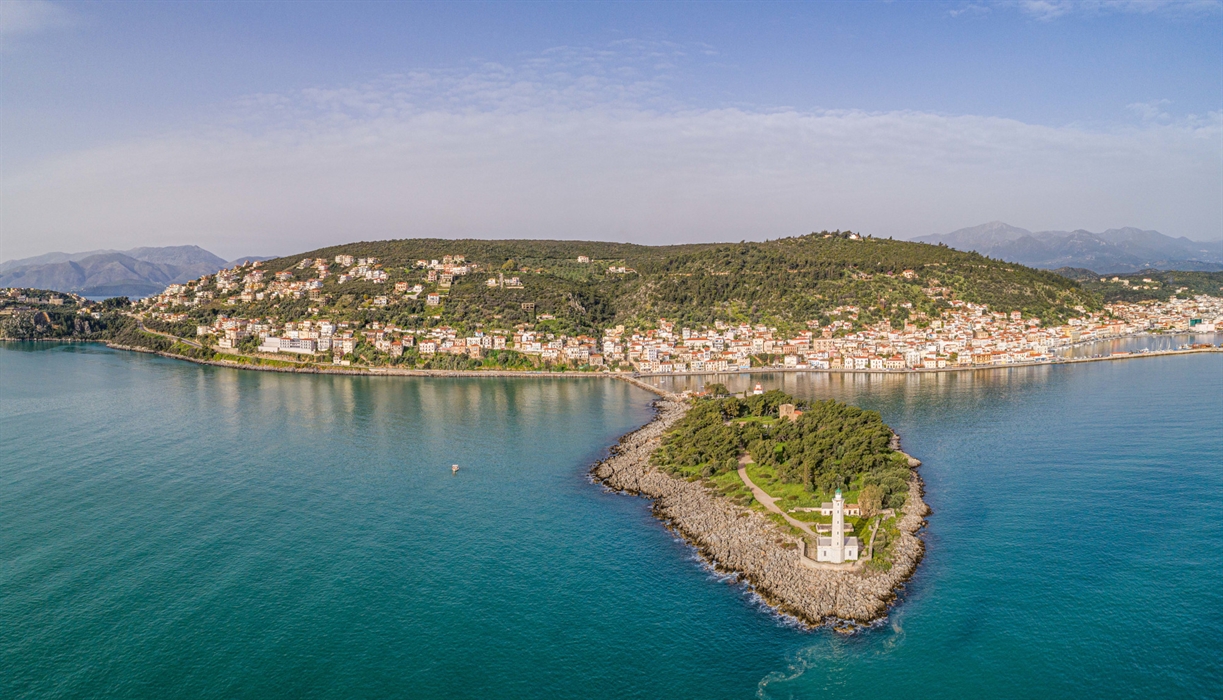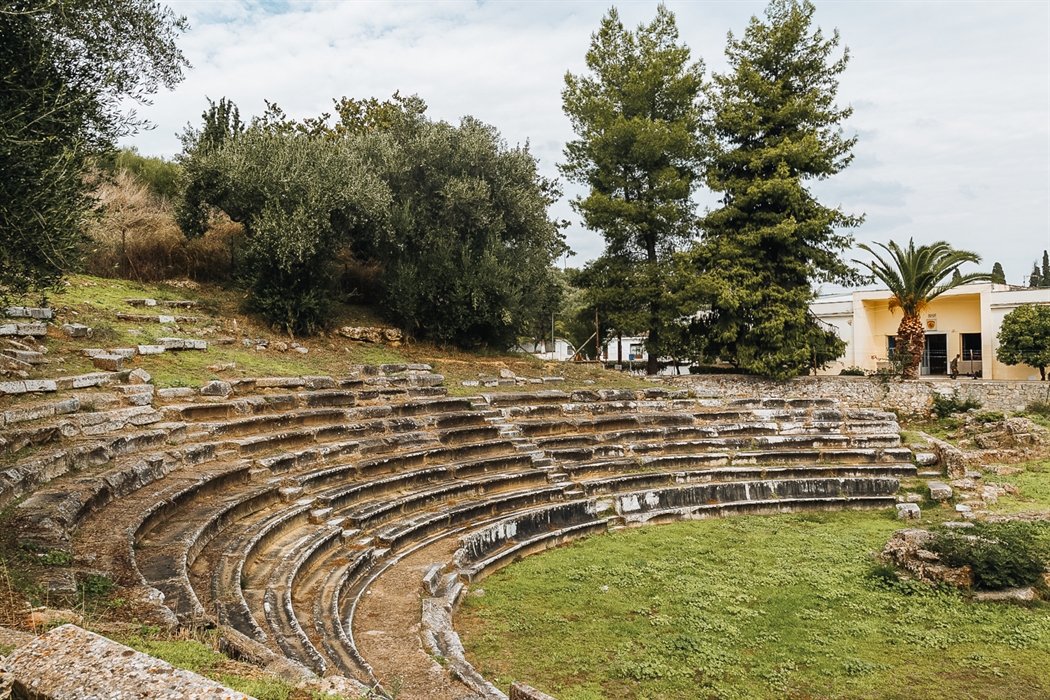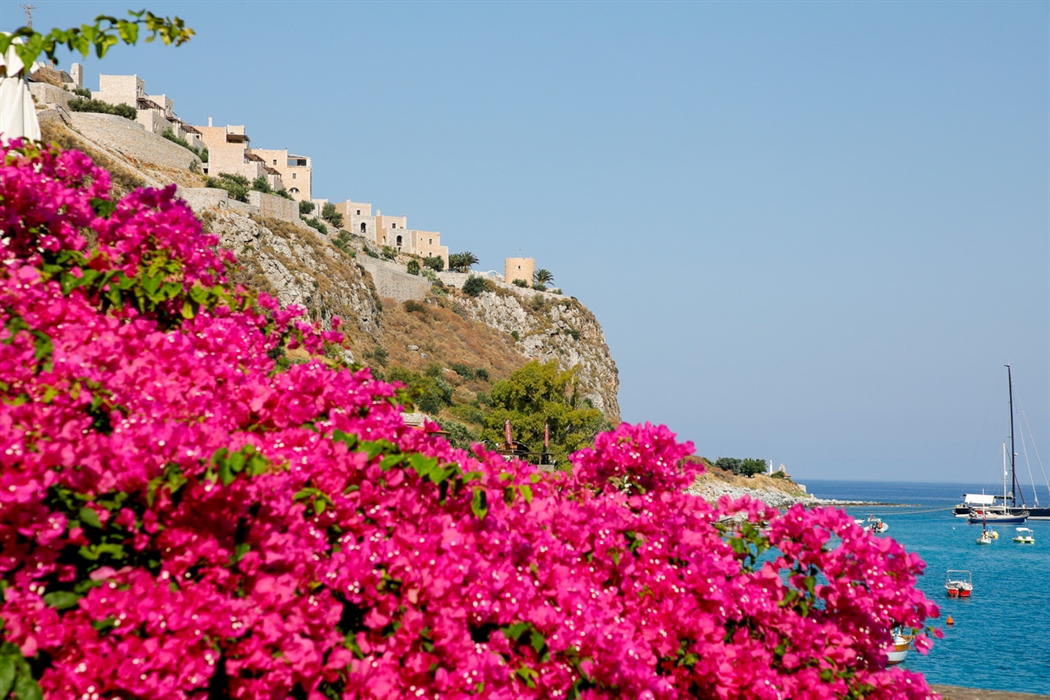Gytheio
Gytheio is the perfect base for your holidays in Mani. It’s a charming, vibrant town with lots of beautiful neoclassical buildings, and even though it’s on the mainland it has a real “island vibe”. There’s plenty to do as you can walk over to Cranae Island, go for a stroll beside the long waterfront, head to one of the lovely beaches nearby or visit some of the museums. And there’s also a wide variety of good accommodation, food, entertainment and shopping to be found in Gytheio – what more could you need?
A holiday in Gytheio is a holiday in the “Land of the Gods" literally as well as metaphorically! The town’s name is derived from "gyia" (land) and “theos” (god), but while you might think this reflects the area’s beauty, there’s actually another myth behind the name. When the ancient city was being built,
Hercules and Apollo fell out over the sacred Delphic Tripod. However, since neither of them won the struggle for the tripod, the city was not named after either of them, but was instead called the "Land of the Gods”.
Gytheio is the second largest port in the southern Peloponnese, after Kalamata. It’s also the gateway to eastern Mani and a wonderful place to spend your holidays, but let’s start by having a quick look at the town’s history.
The first inhabitants of Gytheio were Phoenicians who traded in Tyrian purple, the highly prized natural dye secreted by snails found on the Laconian coasts. In the archaic years it was used as a port by the Spartans. After the city was occupied by the Romans (195 BC), it grew and flourished, becoming the main commercial center of the League of Free Laconians which was established in 21 BC. In far more recent times, in 1975, the central shopping area and the area around the sea were designated as a Preserved Monument. Since 1982, various buildings in the city have been designated as Historically Preserved Monuments, or Works of Art.
For a long time, until the 1821 War of Independence the city was known as Marathonisi.
Back in the present day, you’ll be charmed by this town with its beautiful setting at the foot of Mount Larysio (Akoumaros). Gytheio has an “island vibe” with its neoclassical buildings, long, wide waterfront and the view out over the Laconian Gulf. If you decide to stroll along the waterfront, keep an eye out for the impressive building from 1890 that houses the town hall and the Ancient Greek and Byzantine Collection of the Archaeological Museum. You can see various finds from excavations in the area and the Mani in general - including engraved inscriptions, ossuaries decorated with sculpted reliefs, ceramics and sculptures from the Roman times, etc. The sarcophagi with the various scenes depicted on them show how wealthy and powerful the ancient society of the Free Laconians was.
Behind the town hall, in P. Venetsanaki square, you can see the Girls’ School building from 1886. It has many neoclassical features and is now home to the Culture Centre of the Municipality of East Mani, a modern city museum about the history of Mani and its people. The displays include a wealth of archival and artistic photographic material and manuscripts. (Tel. 27330 23888).
If you continue along the waterfront, past Gytheio marina and a series of cafes, patisseries and restaurants, you will soon see the famous Cranae Island (Marathonisi). It’s not everyday that you can walk to an island, so follow the strip of land that leads out to it and spend some time exploring. The island has a special place in mythology, as Helen of Troy and Paris supposedly spent the night here after they fled Sparta and before their journey to Troy. The most imposing building on the islet is the 1829 Tzanetakis Tower, named after the leader in the 1821 Greek war of Independence, Grigorakis Tzanetakis. Once you reach the end of the island you’ll see the impressive lighthouse with its 22 m high octagonal tower.
If you turn to go back to the town, you’ll pass the sea-side square where you can wander round the shops or climb the steps to the old neighbourhoods in the upper town. If you can, make your way up to Agios Dimitrios where you’ll get a lovely view out over the rooftops to the sea. The church itself is a single-aisled early Christian basilica with Roman inscriptions and the bell tower was restored in the 1980s.
Theatre. At the other end of the town, towards the north and at the foot of the acropolis, there is a Roman theatre (2nd century AD). It was mostly built from off-white marble and had twelve rows of seats. The stage was 12 m long and 5 m wide. Gytheio is the main town in the area and has a good selection of businesses and shops. Look out for shops selling local and organic products such as, olives, olive oil, honey, handmade soaps, and pulses from the Mani (don't forget to get lupin beans). The patisseries have delicious traditional lalaggia and tiganides (fried dough strips). There is also a pastry shop that has a long-standing family tradition of making sesame seed bars in a variety of unusual flavours.
There are plenty of places to eat in Gytheio -from traditional tavernas and ouzeries, to restaurants serving modern Mediterranean cuisine. In addition to the excellent fresh fish and seafood, try the famous suckling pig, Mani sausages with oranges, syglino cured pork and Mani wild greens pie, and you can wash your meal down with beers from the Laconian Brewery Sparta. There are also many good hotels here, both in the town and around it.
The nearest beaches to Gytheio are Selinitsa and the large Mavrovouni beach with its wonderful sand –also a good place for water sports. The famous Glyfada beach with the wreck of the ship "Dimitrios" that ran aground there in 1981 is to the north east of the town.
See detailed information on the beaches
Location
Find the destination on the interactive map below.
Categories
Weather
Σχετικό περιεχόμενο χρηστών (UGC)
Ενημερωθείτε για ενδιαφέροντα θέματα γύρω από τον προορισμό μέσα από το περιεχόμενο των χρηστών μας
Discover 7 hidden gems of the Peloponnese
Many of you may have already visited some of the most renowned attractions…
TOP 10 archaeological museums in the Peloponnese
Olympia, Mycenae, Epidaurus, Diros Cave, Ancient Corinth, Messene and…
TOP 10 Castles in the Peloponnese
Castles galore! Mystras, Monemvasia, Palamidi, Methoni, Koroni,…
Newsletters
- About us
- FAQ's
- Map
- Tourism information centers
- Disclaimer
- Sitemap
- Our brand
- Media roum
- Adding your bussiness
- Corporate
- MICE

Peloponnese. Greece beyond the obvious





Design and creation from Cosmote
Marinas and Moorings
Diving centers
Get inspired
- Media gallery
- Blog
- The Peloponnese in the media
- Your feedback
- Users' general content
- Users' local products
- Users' events content
- Ask a local
More
- Accommodation
- Travel agencies
- Restaurants
- Services
- Destinations Map
- Weather
- Public transport
- Events
- Frequently asked questions
- Useful phones
- B2B
- Destination Data
- Contact

